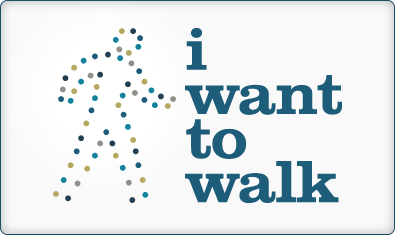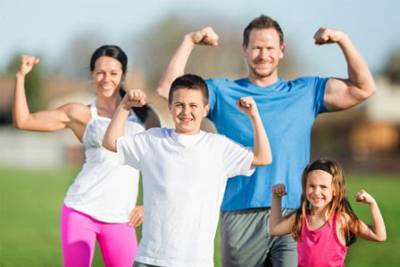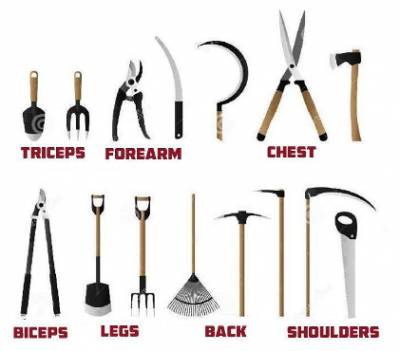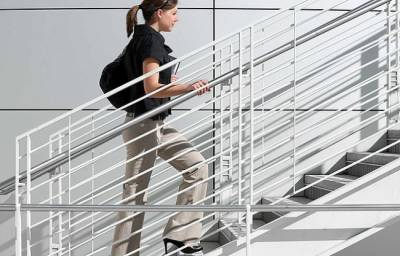
One of the most dramatic changes to our lifestyle over the past 100 years has been the decline in standing and walking. At the beginning of the 20th century 90% of the world’s population was involved in some sort of rural activity. In the 21st century this number has declined significantly as more of us move to the city and live a more urban existence.
Research continually reinforces the notion that we sit for longer periods and are sedentary than at anytime in our history. Obese people have been reported to sit for an additional 2.5 hours in comparison to their leaner cousins. Consequently an increase in standing and walking could be regarded as pivotal in our weight loss journey.
The one factor of non-exercise activity thermogenesis that is most modifiable is standing and walking. Apparently most of our free living-walking day consists of multiple short duration low velocity walking bouts. It has been reported that a decrease in 6 kilometres of walking per day is associated with a significant increase in bodyweight.
To compound this problem, the more overweight be become, the less walking and standing we do. It has been speculated that when we gain weight there is a decreased sensitivity to central neurotransmitters that are responsible for walking and so we walk less. Eliminating just “walking to walk” and using the car have eliminated approximately 100 Kcalories per day of energy expenditure out of our current lifestyle.
To attenuate our decrease in walking distance of 6 kilometres per day we need to examine our free living time and attempt to integrate more standing and walking into our day.
Ways to make your home more active:
- Get up off the couch and walk to a predetermined place in the house during commercial breaks
- Stand while reading books, morning newspaper, e news on tablets etc
- Always answer the phone, text messages, social media etc while standing
- Walk while carrying small children
- Childcare standing – dressing, bathing, grooming, feeding, occasional lifting of child-light effort
- Take the dog for a walk
- Use a standing desk at home or in the office
- Stand while pumping petrol, change light bulb, etc.
- Wash the windows, clean the garage
- Make more trips to put out the garbage, fill the car etc.Walking loading /unloading a car

Ways to make your housekeeping more active:
- Iron while standing
- Stand while doing the laundry, fold or hang clothes, put clothes in washer or dryer, packing a suitcase
- Put away clothes and laundry
- Make the bed
- Do more household chores, such as folding the clothes, ironing, was the dishes while standing watching television
- Perform multiple household tasks all at once
- Clean sink, toilet and showers
- Take out rubbish
- Vacuum or mop the floors
- Dust the house
- Tidy up the house by re-arranging the furniture.
- Hang out the clothes rather than use the clothes dryer

Ways to make your food preparation more active:
- Wash dishes – standing or in general (not broken into stand/walk components
- Clear dishes from table one piece at a time
- Cook or food preparation while standing (not broken into stand/walk components), use manual appliances
- Serve food, set table while walking or standing
- Put away groceries (e.g. carrying groceries, shopping without a grocery cart), carrying packages
- Go food shopping with or without a grocery cart, standing or walking non-food shopping,
- Walk while shopping (non-grocery shopping)
- Put away household items one a time
- Shop by visiting the store, no internet or takeaway delivery
- Eat the evening meal standing up
- Wash and dry the dishes and put them away one a time
- Keep the kitchen clean, wipe down benches, cupboards etc
- Walk down every aisle at the shopping centre

Ways to make your gardening more active:
- Weed the gardens
- Keep the yard and garden clean by picking up leaves, branches etc
- Stand to water the garden, plants and bushes
- Walk while applying fertilizer or seeding a lawn
- Pick fruit off trees/vegetables
- Rake the lawn
- Sack the grass, leaves
- Trim shrubs or trees, power cutter, using leaf blower, edger
- Mow the lawn using a power mower
- Plant seedlings, shrubs, trees
- Chop wood
- Clear land, haul branches, wheelbarrow chores
- Dig, spading, filling garden, composting gardening with heavy power tools, and tilling a garden, chain saw
- Mow lawn with a hand mower
Ways to make your work more active:
- Stand and take breaks from your computer or desk every 30 minutes
- Take breaks in sitting time from long meetings
- Stand and greet visitors to your office or workstation
- Stand up while taking phone calls
- Walk to colleague’s desk rather than emailing them
- Drink more water by standing and walking to the water cooler or toilet
- Move your bin away from your desk so that you have stand up and move toward it
- Call stand up or walking meetings
- Eat your lunch away from your desk
- Take a short walk during your lunchtime
- Position the printer away from the computer to ensure you stand and retrieve
- Use software that prompts you to stand up and/or take a break from your computer
- Install height adjustable “˜hot-desks’ that employees can share
- Use headsets or the speakerphone during teleconference so that you can walk and talk
- Stand at the back of the room during presentations
- Devote some part of your lunch hours to walking or standing. Do your banking, shopping etc during this time
- If required to park at the workplace before taking the steps to the office walk for 15 minutes around the area before going into the office building
- Eat lunch while walking easy for 30 minutes easy and then spend the remainder of lunchtime eating lunch standing up.
- If at airport for work walk up and down the terminal
- Stand and squat at least 32 times per day. Every 15 minutes stand for a minute for 8 hours work shift.]
- Walk the long way back to your desk or workstation
- Isolate your workstation so that you have to walk and move for every service

Ways to make your transport more active:
- Leave your car at home and take public transport
- Drive a manual car rather than an automatic
- Stand up in the train or the bus
- Get off a station before your destination and walk the remainder
- Park your car away from your destination and walk the rest of the way
- Plan regular breaks on a car journey
- When travelling on planes or as a passenger in a car use the exercise routine recommended by the airline to keep muscles working and blood flowing
- Walk or ride a bike to walk
- Develop an active travel plan sourcing travelling options to and from work
- Map walking routes near work that can be used during the lunchtime, beginning or after work.
- When travelling on planes use the exercise routine recommended by the airline to keep muscles working and blood flowing
- Drive a motor scooter or motorcycle
- Walk while pushing or pulling stroller with child or walking with children
- Walk from the house to car or bus, from car or bus to go places, from car or bus to and from the worksite
- Walk to shops, neighbour’s house or family’s house
At School:
Walk to and from school, less sitting, walk to and from the school bus
Ways to make your leisure time more active:
- Select activities that require a minimum of standing up and preferably with some walking or additional movement
- Watch sporting activities, concerts etc while standing up for as long as possible
- Stand while playing a musical instrument or any other hobby or interest
Take a “Whole day approach to movement” and try to move as much as possible during the day, every little bits helps.
Possible suggestions might be:
Music playing, fishing and hunting fishing, general water activities canoeing, rowing sailing, boat and board sailing, windsurfing, ice sailing, general water activities surfing, body or board standing – arts and crafts, moderate effort, kayaking snorkelling, white-water rafting, kayaking, or canoeing skiing, downhill, light effort skiing, water cross country skiing, sledding, tobogganing, bobsledding snow shoeing, hiking, bush walks.
Plan active outings, cycling, bush walking etc.
Lots of options, so start moving 🙂
Dr Paul Batman
Australian College




